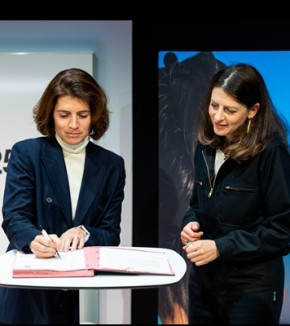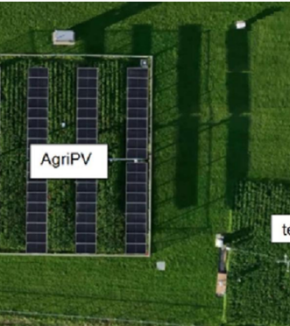IonSat

IonSat is a propelled nanosatellite developed by students at the École Polytechnique.
The latest news are available on the newsletter !

The project in a nutshell
| Partners | École polytechnique, ThrustMe, CNES |
| Dimension | 6U (10x20x30 cm) |
| Number of students | 54 |
| Launch | Estimated in 2025 |
| Duration of the mission | Minimum 12 mounths |
| Injection orbit | 350 km |
| Estimated total budget | 1.4 M€ |
Station keeping in very low orbit (VLEO)
The project aims at designing, placing and maintaining in low orbit a propelled nanosatellite. This project is in line with the growing interest in very low orbits caused by their numerous advantages (reduced communication latency, better resolution, lower launch costs...).
The satellite should be launched from the ISS and descend to an altitude of 300km. This descent is based on the aerobreaking technique, which consists in using atmospheric drag to slow down the satellite by orienting the largest surface perpendicular to the trajectory to maximize the drag force.
Once at 300km of altitude, the station-keeping mission begins. At regular intervals, the nanosatellite will descend to altitudes 10km lower. The satellite will thus descend by stages for a desired duration of 6 months. The mission might be extended in case of success.
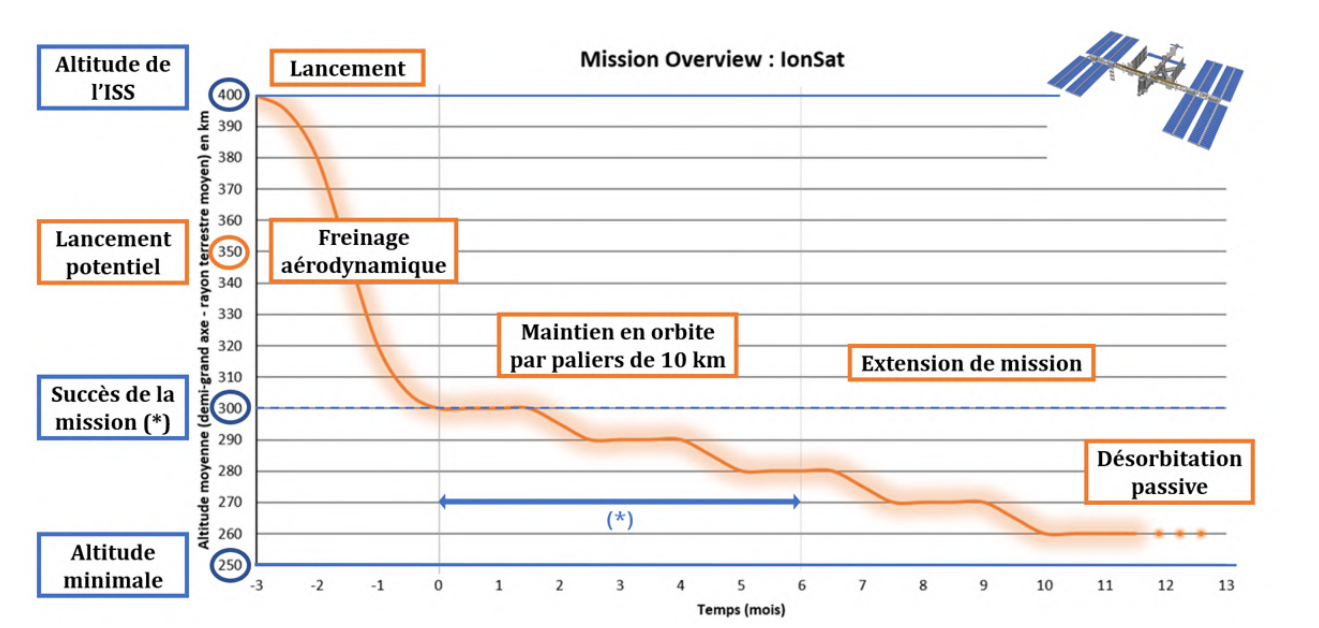
Illustration of the mission planning for IonSat: representation of the average altitude on an orbit as a function of time. The mission is considered a success after 6 months of station keeping, i.e. about three descent steps.
A fully electric platform
The selected propulsion system is an NPT30-I2 ion engine provided by ThrustMe. It works with a power up to 60W, which is very high for a nanosatellite of the size of IonSat.
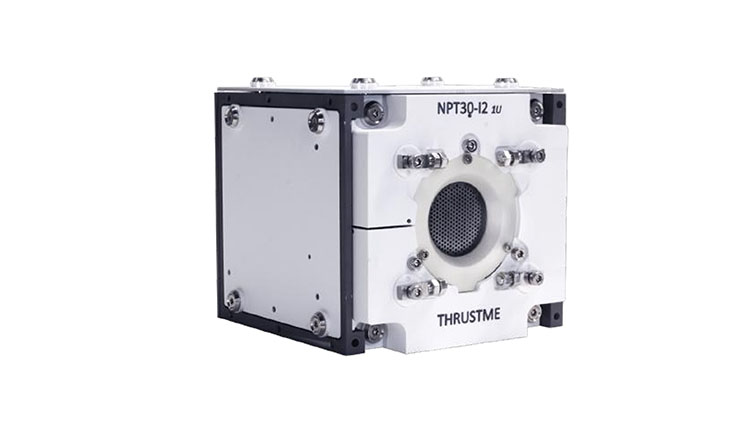
The NPT30-I2 Ion electric thruster, a gridded electric thruster using Iodine as a propellant. Image credits: ThrustMe
One of the challenges of the mission is to provide the necessary power, which requires a precise study of the energy recovery capacities of the solar panels, coupled with the use of the battery. Note that such high onboard power consumption impacts different aspects of the design of the platform. For instance, it significantly impacts the thermal control strategy of the satellite, as a good capacity of heat evacuation is required to stabilize to low-enough temperatures the satellite's components and ensure the proper functionality of the different subsystems.
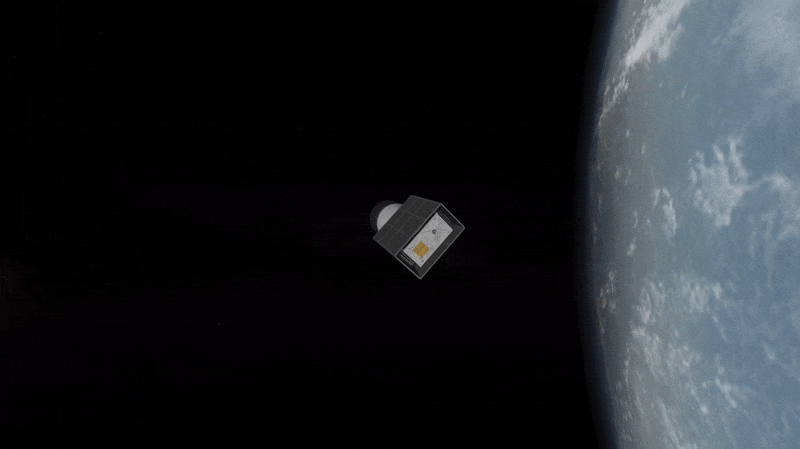
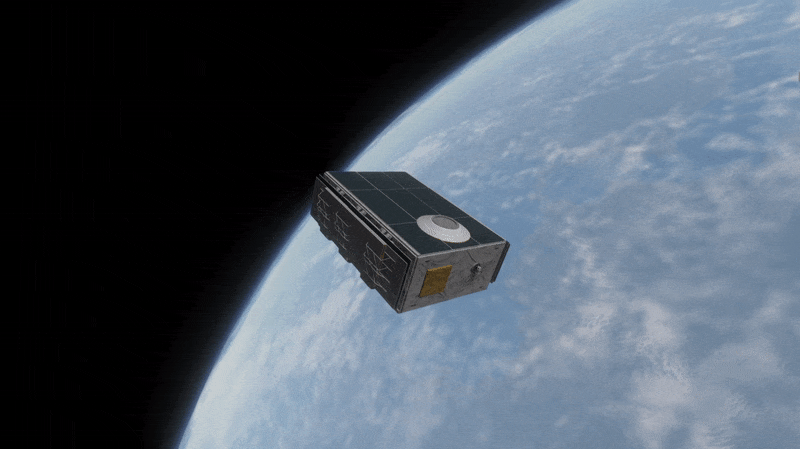
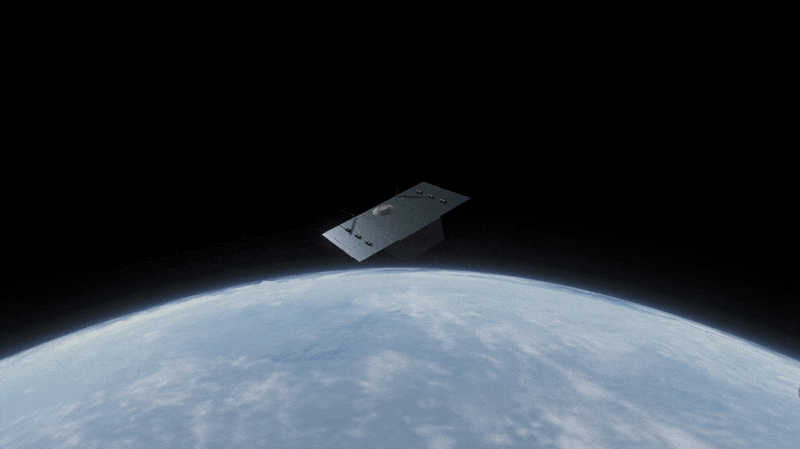
Joining us
We offer different internships throughout the year. You can find more information on the dedicated page.
Communications
The Ionsat project has been the subject of a few papers and presentations prepared by our students and presented at international conferences:
- International Astronautical Congres (IAC) 2020 IonSat : a student nanosat with an iodine thruster in very low earth orbit. View related article.
- International Astronautical Congres (IAC) 2019 Fitting a high total impulse electric propulsion system in a student CubeSat to compensate the atmospheric drag in low-earth orbit. View related article.
- International Astronautical Congres (IAC) 2018 IonSat: challenging the atmospheric drag with a 6U nanosatellite. View related article.
- 7th Interplanetary CubeSat Workshop 2018 IONSAT: Challenging the atmospheric drag with a 6U nanosatellite. View the presentation material.
Scientific communications
External presentation Décembre 2020 : the first newsletter.
 Support l'X
Support l'X 


